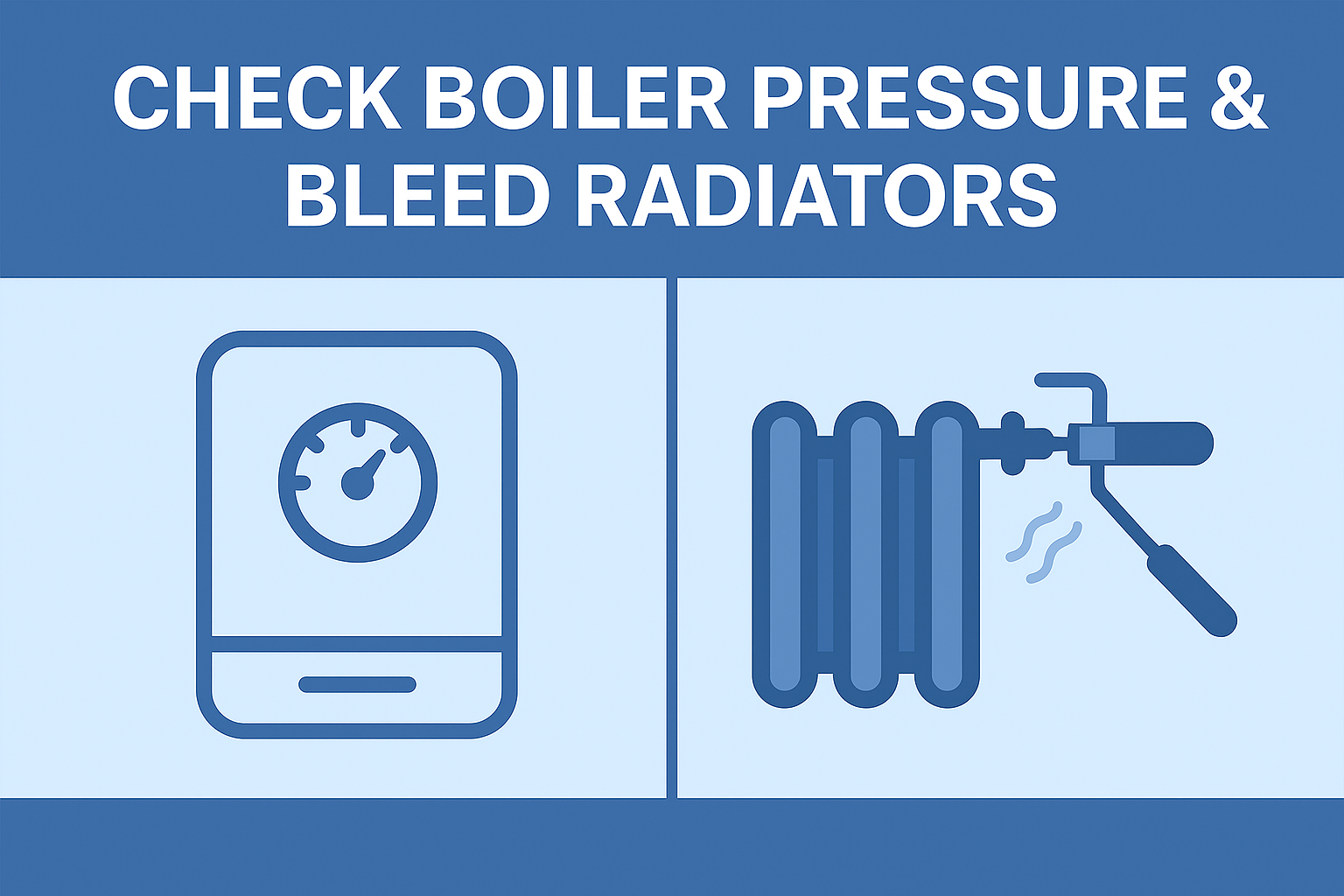Week 2: Check Boiler Pressure & Bleed Radiators
Posted on September 8th, 2025

One of the most common reasons heating systems lose efficiency — or even stop working altogether — is low boiler pressure or air trapped in radiators.
Both are simple checks that landlords can do themselves, and resolving them early helps keep your system running efficiently and avoids unnecessary tenant call-outs in the middle of winter.
Why Boiler Pressure Matters
Modern sealed heating systems, such as combi and system boilers, rely on water pressure to circulate hot water. If the pressure is too low, the boiler may lock out as a safety measure, leaving your tenants without heating or hot water.
The ideal pressure is usually between 1.0 and 1.5 bar when the system is cold. If it’s higher or lower, your boiler may not work properly.
How to Check Boiler Pressure
- Locate the pressure gauge on the front of the boiler.
- Read the dial when the system is cold.
- Normal: 1.0–1.5 bar
- Low: Below 1.0 bar
- High: Above 2.5–3.0 bar
- If the pressure is low, you’ll need to top it up using the filling loop.
How to Top Up Boiler Pressure (Using the Filling Loop)
⚠️ Safety first: Always consult your boiler’s manual. If unsure, stop and call a Gas Safe engineer.
- Turn off the boiler and let it cool down.
- Locate the filling loop — a silver, flexible braided hose underneath the boiler, usually with two small valves (taps or levers).
- Open the valves slowly. You should hear water entering the system.
- Watch the pressure gauge rise.
- Close the valves once the gauge reaches 1.2–1.5 bar.
- Turn the boiler back on and check that it fires up normally.
👉 If the pressure keeps dropping after topping up, there may be a leak in the system — call a Gas Safe engineer.
Why Bleeding Radiators Is Important
Air can become trapped in radiators over time. This causes cold spots at the top of the radiator and reduces heating efficiency.
Bleeding the radiators releases this air, helping the system circulate hot water evenly and improving comfort for your tenants.
How to Bleed a Radiator
You’ll need a radiator key (available at most DIY stores), a small flat blade screwdriver, a cloth, and a small container. You can test each radiator by allowing the heating to warm up, but sometimes it is easier to bleed every radiator.
- Insert the radiator key (or flat blade screwdriver if needed) into the bleed valve (usually at the top corner).
- Turn the key slowly anti-clockwise. You’ll hear a hiss as air escapes.
- Once water starts trickling out, tighten the valve back up quickly.
- Check the boiler pressure afterwards — bleeding radiators often lowers pressure, so you may need to top it up again (see steps above).
If your heating system contains a lot of air, you may need to top up several times. If the hiss of air stops and water does not start trickling out, then tighten the valve, re-pressure the boiler and bleed the radiator again.
When to Call for Help
- Boiler pressure keeps dropping after topping up
- Radiators remain cold even after bleeding
- You’re unsure about using the filling loop or bleed valve
Take Action This Week
By checking your boiler pressure and bleeding radiators now, you’ll:
✅ Keep your system efficient
✅ Avoid winter breakdowns
✅ Save money on emergency repairs